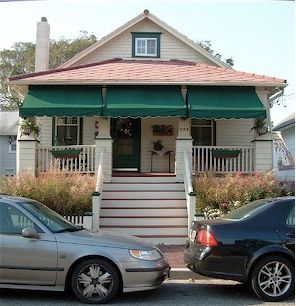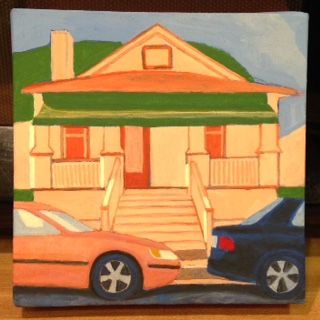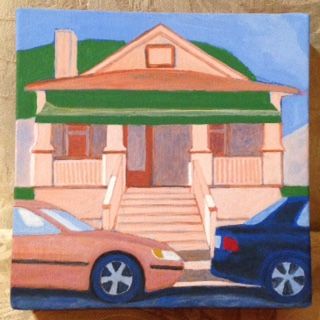In a recent discussion with TarheelDem, he and I sort of disagreed about Teddy Kennedy’s 1980 primary challenge to Jimmy Carter. In his view, it was Kennedy nostalgia among party elites and a not insignificant portion of the Democratic Party base that led to Teddy’s challenge. Not an invalid position; although I still think it was more complicated than that. But it got me to thinking about both an earlier and later time. How had California after rejecting Nixon for Governor in 1962 ended up with a string of conservative Senators and Governors after that?
Historically, California generally had one liberal and one moderately conservative Senator and usually one Republican and one Democrat.
Class 1:
Senator Hiram Johnson (R) 1917 – 1945 was by today’s standards liberal.
Knowland(R) 1945-1959, inititally appointed by Governor Earl Warren, was more conservative.
Clair Engle (D) 1959-1964.
Class 3:
From 1933 – 1950 the seat was held by a Democratic. The last one, Sheridan Downey, morphed during his political career from a progressive liberal to a conservative Democrat. Rather than face a primary challenge from the left of the party, he dropped out of the 1950 race. Helen Gahagan Douglas was the Democratic nominee and was smeared by Richard Nixon. That put two CA Senators in the Republican caucus; both more conservative than their predecessors and Nixon was far more conservative.
Earl Warren also appointed Thomas Kuchel to Nixon’s seat in 1953, and he was subsequently elected and remained in office until 1969.
The Republican 1958 switcheroo was long considered the most bone-headed move by a CA political party. Sen. Knowland wanted to be governor and the party prevailed upon incumbent governor Goodwin Knight to run for the Senate. The thing was that both Warren and Knight were fairly liberal Republicans and in running for governor, it became clear to the electorate that Knowland was far more conservative. Knowland and Knight both lost. Pat Brown became governor and Clair Engle senator. Brown (D), Kuchel (R), and Engle (D) was a good combination for the CA electorate of that time.
Then came 1964. Kennedy nostalgia among some Democrats set in. That was somewhat bizarre in that JFK wasn’t a figure in CA politics – and the “native son” had taken the state in the 1960 election even if they rejected him for governor two years later. It also had a stink of rank and premature opportunism. Sen. Engle was running for re-election, but he’d been left partially paralyzed from an operation for a brain tumor in the summer of 1963. He had a primary challenger, State Controller Alan Cranston, and then he had two, Pierre Salinger, JFK’s Press Secretary who had never held elective office. As his health continued to deteriorate, Engle dropped out of the race. Salinger won the primary. Engle died on July 30th at the age of 52.
What came next was like a mini-foreshadowing of Illinois in 2009. Earl Warren had appointed two replacement senators. Both reasonably acceptable to the electorate as replacements for their predecessors – perhaps more because of who had made the appointments than that they were objectively and politically in-line with their predecessors. Were those appointments political? Absolutely. But they were also pragmatic as neither man had any trouble winning subsequent elections. Warren went on to become Chief Justice of the Supreme Court and Rod Blagojevich went to the pokey.
Pat Brown had an open senate seat in the middle of the general election. The GOP nominee was practically a joke. It’s anyone’s guess as to how that election would have played out on its own. But Brown made the unwise decision to put a thumb on the scale by appointing Salinger for the few months remaining of Engle’s term. George Murphy won in the year of a Democratic landslide. That also set the stage for another aging Hollywood guy to run for governor two years later and defeat Brown despite his high approval ratings for his job performance.
Murphy proved too much of a joke as Senator and was tossed after one term. (The other GOP senator was defeated in 1968 by Alan Cranston.) Murphy was replaced by a man that did win a House seat in 1964 after a mere three years as a CA resident who also had close ties to the Kennedy family. By 1976, he didn’t fit so well with CA either, particularly not when there was a Democratic governor and another Democratic Senator. This has remained the “conservative” CA Senate seat ever since. Filled by Republicans until 1992 when Feinstein took over.
Absent JFK nostalgia, Cranston would have been the Democratic nominee in 1964. He had a much better chance to beat Murphy, particularly if Brown had refrained from appointing him during the general election. No Sen. Murphy – would have greatly increased the odds that there would have been no Governor Reagan.
A creepy side note. Senator Murphy created the Candy Desk (his only Senatorial achievement). The current keeper of the Candy Desk is Sen. Mark Kirk.
Some small missteps can have large and lasting repercussions.



